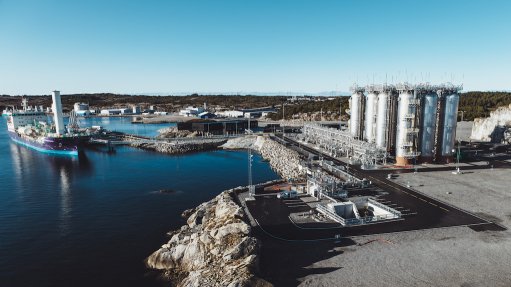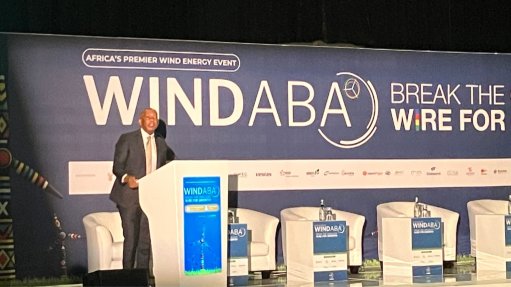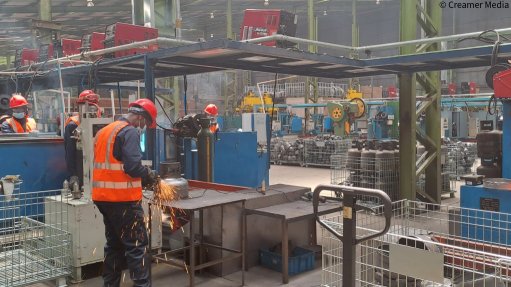Long-term growth thinking, planning critical now for banks and public sector
University of Stellenbosch Business School (USB) says South Africa will not see a sharp and quick economic bounce back that many are hoping for, but will rather see a 12- to 24-month gradual recovery with the added complexity of managing a rebuild and growth plan that, in turn, spans up to eight years.
USB corporate finance lecturer and private equity firm First River Capital director Jason Hamilton remarks that although the latest R500-billion stimulus announced by President Cyril Ramaphosa is welcome, further action will be needed.
“It is imperative that while government and the private sector remain focused on the immediate response and support required, we lift our heads and look forward towards crafting an integrated recovery and growth plan,” he says.
Hamilton puts forward that a step towards recovery is evident through the Monetary Policy Committee (MPC) having decreased the repo rate by 225 basis points this year already, which reduces debt costs and provides some reprieve in the short term. The full effect of rate changes, however, take effect only after six to twelve months in the economy.
He adds that with the inflation outlook within the targeted band – 3% to 6% - for the medium term, the MPC has room to provide stimulus of another 100 to 200 basis points to stimulate and support demand as part of a long-term growth strategy.
“However, this alone will not be enough to support a recovery and growth plan, since it will require significant investment and stimulus over a number of years, driven by an integrated and collaborative effort from government, private sectors and its local and international funding partners.
“The Covid-19 pandemic has proven that we are a global economy and reliant on each and every market for our own success. This unity and joint action will be the crucial factor that will determine our successful rise and recovery, which will see developed and stronger economies supporting the emerging markets.”
PUBLIC SECTOR
Hamilton says restoring confidence is one of the major factors needed to attract foreign direct investment, not only to fund the recovery from Covid-19, but also the long-term growth plans of the country over the next eight years.
“In addition to accessing the Unemployment Insurance Fund for the stimulus announced to date, the Government Employees Pension Fund (GEPF) has significant surplus funds available that could be accessed.
“There is also an under allocation across some of the mandated investments, leaving headroom for allocation of additional funds which can be deployed directly or through co-investment. This can be a viable source of capital to assist during the recovery phase and subsequent growth phase,” Hamilton suggests.
He points out that private sector savings can be accessed through the asset managers with certain regulatory adjustments – reviewed prudential limits – which will increase the funds available for local deployment.
“This will require the review of return profiles and investment criteria to ensure alignment. As with development finance institutions and the GEPF or private sector funds accessed for investment it will be aligned to Sustainable Development Goal-focused projects and companies.
“We will also see a renewed focus on the already established regional trade zones which can effectively be used to leverage trade and enhance relations. What is required is a unified approach, both during the crisis and for any long-term growth plan.”
The African Continental Free Trade Area is an agreement that unifies the African continent and its 1.3-billion people which, if managed correctly, can put Africa in a very strong position by forming a unified trading block and creating a regional value chain.
Hamilton says the trade initiative could be the secret sauce that the continent has been looking for and leveraging this over the medium to long term will be crucial.
He adds that further stimulus could also be provided through reducing the tax burden on the private sector, ensuring more funds are available for investment and savings.
“We will likely see this coming through in the form of incentives as opposed to rates being dropped.”
BANKS AND PRIVATE SECTOR
Hamilton suggests that through the regulatory adjustments made to date, such as capital adequacy and liquidity ratio adjustments, banks have access to more than R500-billion to assist with market liquidity.
“They have also now been provided with a R200-billion guarantee scheme which will assist in the further adjustment of the credit and lending criteria. This does not imply that grants or zero interest rates loans will be made as commercial terms will still be applied based on a risk adjusted model.”
Hamilton believes banks are well placed owing to the infrastructure available to be used for such disbursements but it will only be done with specific government or development finance guarantees and under specific directives.
“Private debt held by institutional, local and foreign investors is a key provider of liquidity for South African corporates.
“However, this has proven difficult to restructure if we look at what has happened in the US and European Union’s private debt markets where short term assistance has not been easily accessed. Companies should review their agreements to see what options are available to them and government has already provided opinion and guidance to the sector in this regard to motivate an aligned response.”
Article Enquiry
Email Article
Save Article
To advertise email advertising@creamermedia.co.za or click here
Comments
Press Office
Announcements
What's On
Subscribe to improve your user experience...
Option 1 (equivalent of R125 a month):
Receive a weekly copy of Creamer Media's Engineering News & Mining Weekly magazine
(print copy for those in South Africa and e-magazine for those outside of South Africa)
Receive daily email newsletters
Access to full search results
Access archive of magazine back copies
Access to Projects in Progress
Access to ONE Research Report of your choice in PDF format
Option 2 (equivalent of R375 a month):
All benefits from Option 1
PLUS
Access to Creamer Media's Research Channel Africa for ALL Research Reports, in PDF format, on various industrial and mining sectors
including Electricity; Water; Energy Transition; Hydrogen; Roads, Rail and Ports; Coal; Gold; Platinum; Battery Metals; etc.
Already a subscriber?
Forgotten your password?
Receive weekly copy of Creamer Media's Engineering News & Mining Weekly magazine (print copy for those in South Africa and e-magazine for those outside of South Africa)
➕
Recieve daily email newsletters
➕
Access to full search results
➕
Access archive of magazine back copies
➕
Access to Projects in Progress
➕
Access to ONE Research Report of your choice in PDF format
RESEARCH CHANNEL AFRICA
R4500 (equivalent of R375 a month)
SUBSCRIBEAll benefits from Option 1
➕
Access to Creamer Media's Research Channel Africa for ALL Research Reports on various industrial and mining sectors, in PDF format, including on:
Electricity
➕
Water
➕
Energy Transition
➕
Hydrogen
➕
Roads, Rail and Ports
➕
Coal
➕
Gold
➕
Platinum
➕
Battery Metals
➕
etc.
Receive all benefits from Option 1 or Option 2 delivered to numerous people at your company
➕
Multiple User names and Passwords for simultaneous log-ins
➕
Intranet integration access to all in your organisation


















